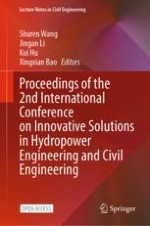1 Introduction
2 Experiment Materials and Methods
2.1 Materials and Mix Ratio
Material | Size (mm) | Bulk density (kg·m−3) | Apparent density (kg·m−3) | Water absorption (%) | Crushing index (%) |
|---|---|---|---|---|---|
Gravel | 5.0~25 | 1572 | 2585 | 0.8 | 8.52 |
RCA | 5.0~25 | 1415 | 2495 | 6.8 | 11.73 |
Material | Size (mm) | Apparent density (kg·m−3) | Clay content (%) | Cl- content (%) | Shell content (%) |
|---|---|---|---|---|---|
Sea-sand | 0.15~4.75 | 2560 | 0.82 | 0.096 | 1.08 |
River sand | 0.15~4.75 | 2610 | 2.91 | – | – |
Specimen | Material usage (kg·m−3) | |||||||
|---|---|---|---|---|---|---|---|---|
Freshwater | Seawater | Cement | River sand | Sea-sand | Gravel | RCA | Additional water | |
OC | 188 | – | 329.82 | 727 | – | 1137 | – | 0 |
RAC | 188 | – | 329.82 | 727 | – | – | 1137 | 22.74 |
SSRAC | – | 188 | 329.82 | – | 727 | – | 1137 | 22.74 |
2.2 Test Piece Production and Methods
Specimen | fcu (MPa) | ||||||||
|---|---|---|---|---|---|---|---|---|---|
0d | 30d | 60d | 90d | 120d | |||||
W | W | SS | W | SS | W | SS | W | SS | |
OC | 40.41 | 43.08 | 43.20 | 44.95 | 45.95 | 46.18 | 41.80 | 47.41 | 30.39 |
RAC | 33.63 | 34.83 | 35.26 | 35.62 | 36.25 | 36.31 | 28.81 | 36.80 | 14.85 |
SSRAC | 35.04 | 35.78 | 36.79 | 36.53 | 37.77 | 36.88 | 30.78 | 37.23 | 16.22 |
Specimen | fts (MPa) | ||||||||
|---|---|---|---|---|---|---|---|---|---|
0d | 30d | 60d | 90d | 120d | |||||
W | W | SS | W | SS | W | SS | W | SS | |
OC | 3.48 | 3.67 | 3.81 | 3.75 | 4.11 | 3.96 | 3.01 | 4.14 | 2.46 |
RAC | 2.82 | 3.10 | 2.97 | 3.24 | 3.10 | 3.33 | 2.07 | 3.34 | 1.29 |
SSRAC | 2.97 | 3.12 | 3.19 | 3.27 | 3.40 | 3.38 | 2.46 | 3.41 | 1.45 |
